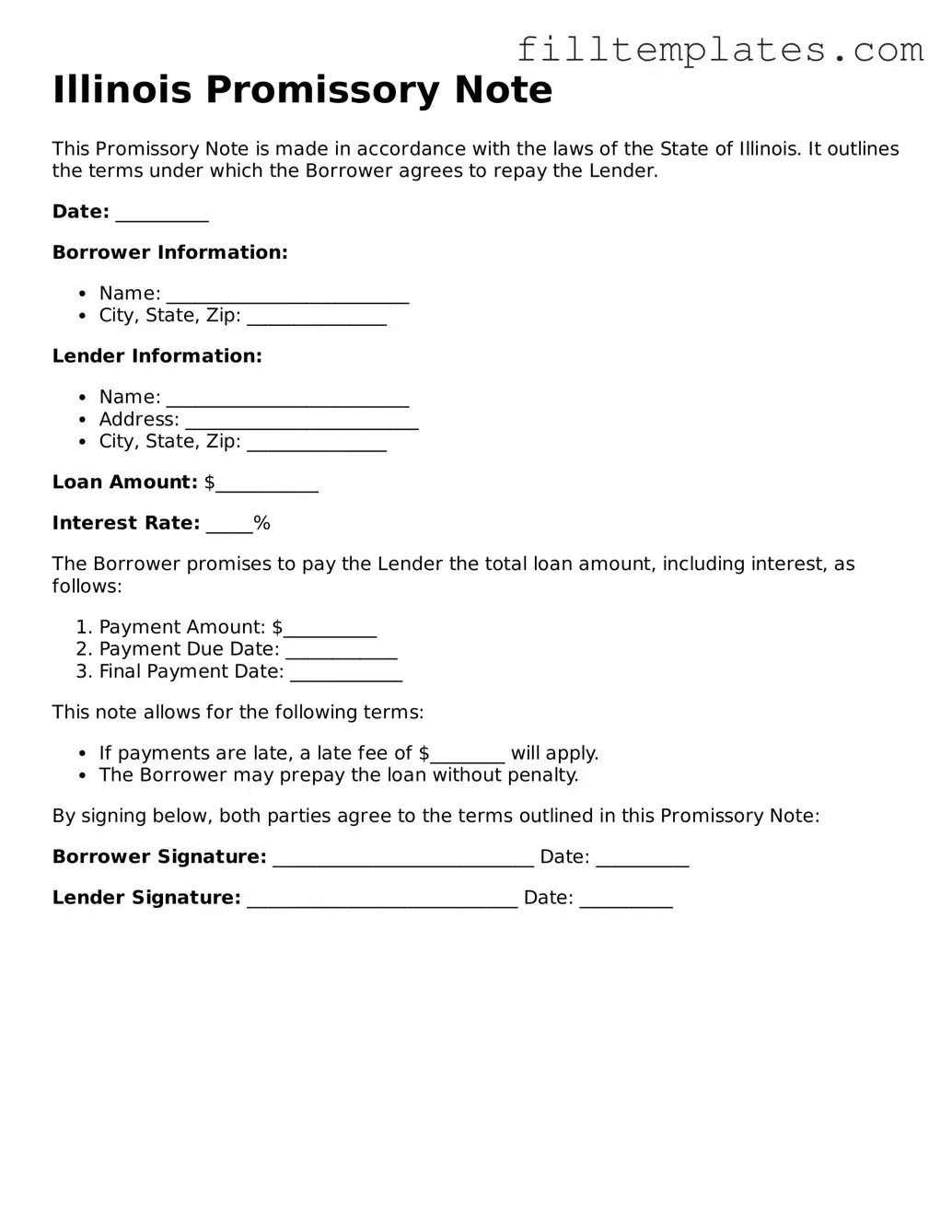Official Promissory Note Template for the State of Illinois
A promissory note is a written promise to pay a specified amount of money to a designated person or entity at a future date or on demand. In Illinois, this form serves as a vital tool for individuals and businesses alike, facilitating various financial transactions. Understanding the key components of the Illinois Promissory Note form is essential for anyone looking to engage in lending or borrowing money.
Open Promissory Note Editor
